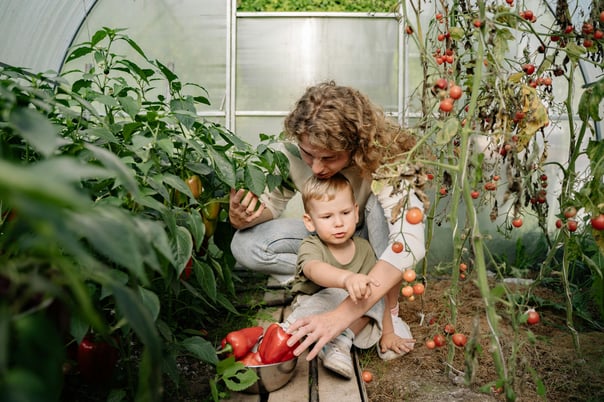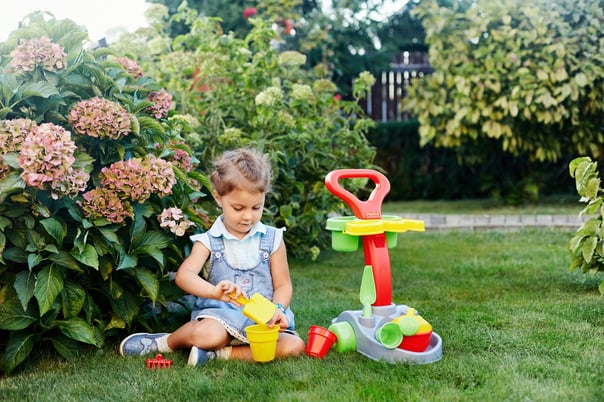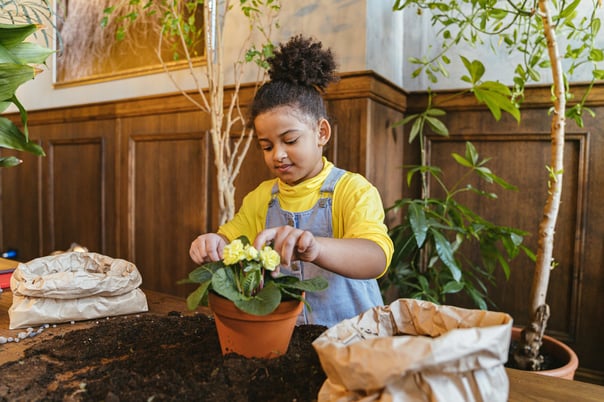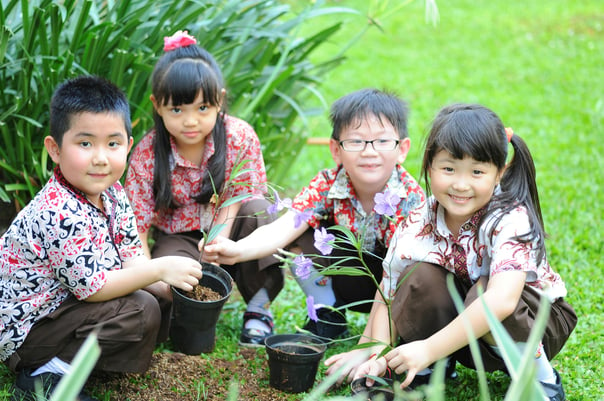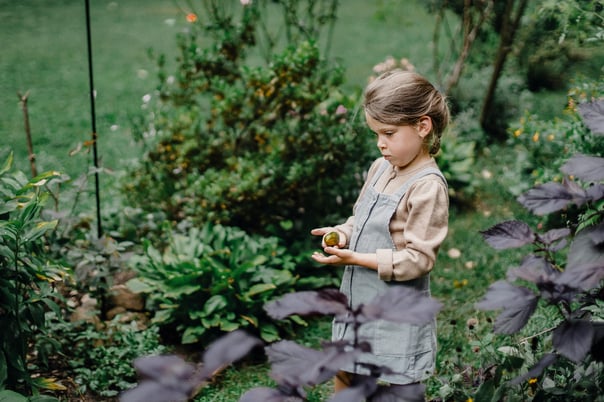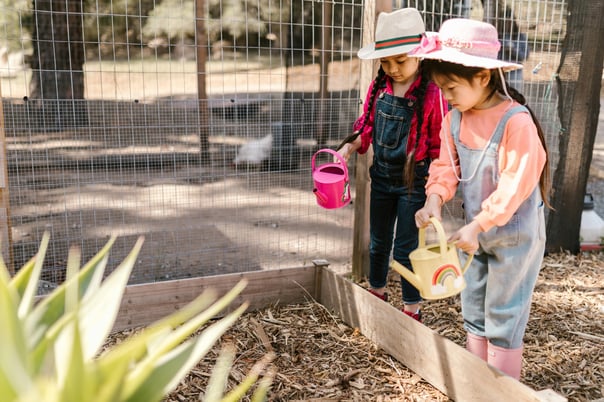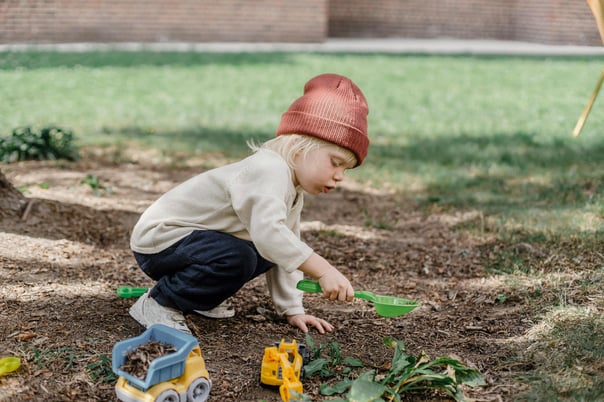Nurturing Children's Love for Gardening: A Guide to Cultivating Green Thumbs
3/1/20244 min read
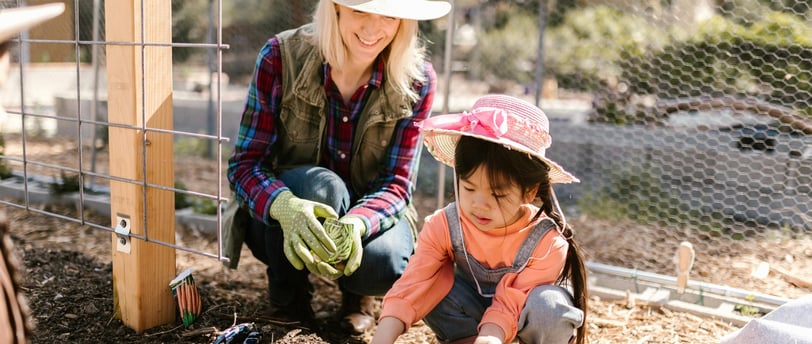

Introduction
In our fast-paced digital era, engaging children with nature can be challenging. However, gardening presents a unique opportunity to reconnect them with the natural world while imparting valuable life skills. This guide explores the myriad benefits of gardening for children and offers practical tips to encourage their involvement.
The Benefits of Gardening for Children
1.1 Physical Health Benefits: Gardening fosters physical activity, promoting strength, coordination, and fine motor skills. It offers a refreshing alternative to sedentary screen time, encouraging children to embrace an active lifestyle. Digging, planting, and watering plants all require physical effort, helping children develop their muscles and improve their overall fitness. Additionally, exposure to sunlight during gardening activities allows children to absorb essential vitamin D, contributing to their overall well-being.
1.2 Mental and Emotional Well-being: Engaging in gardening activities can have a positive impact on a child's mental and emotional well-being. Spending time outdoors and connecting with nature has been shown to reduce stress, anxiety, and symptoms of depression in children. Gardening provides a sense of purpose and accomplishment as children witness the growth and development of their plants. It also cultivates patience, responsibility, and perseverance as they learn to care for their garden and understand the importance of nurturing living things.
1.3 Cognitive Development: Gardening offers numerous opportunities for cognitive development in children. As they plan and design their garden, they engage in critical thinking and problem-solving. They learn about plant life cycles, the importance of soil and water, and the role of insects and pollinators in the ecosystem. Gardening also encourages observation and exploration, as children observe the changes in their plants over time and investigate the various creatures that visit their garden. These experiences stimulate curiosity and foster a deeper understanding of the natural world.
Getting Started with Gardening
2.1 Create a Child-Friendly Garden Space: To nurture children's love for gardening, it is essential to create a garden space that is inviting and accessible to them. Allocate a dedicated area where they can plant and tend to their own plants. Ensure the space is safe and free from hazards. Consider incorporating child-sized tools, raised beds, or containers to make gardening more manageable for young children. Encourage their creativity by allowing them to personalize their garden space with decorations or signs.
2.2 Start with Easy-to-Grow Plants: To build confidence and maintain their interest, start with easy-to-grow plants that yield quick results. Herbs like basil, mint, and chives are great choices as they are resilient and grow rapidly. Flowers such as marigolds and sunflowers are also excellent options for their vibrant colors and fast growth. Additionally, consider growing vegetables like cherry tomatoes or lettuce, which can be harvested relatively quickly. The joy of seeing their plants flourish will inspire children to continue their gardening journey.
2.3 Teach the Basics of Plant Care: Introduce children to the fundamental aspects of plant care. Teach them about the importance of watering, sunlight, and proper soil conditions. Explain how to identify and remove weeds to ensure the health of their plants. Encourage them to keep a gardening journal to record their observations, watering schedules, and any challenges they encounter. By involving children in every step of the gardening process, they will develop a sense of ownership and responsibility for their plants.
2.4 Explore Gardening Activities: Make gardening a fun and interactive experience by incorporating various activities. Engage children in seed planting, transplanting seedlings, and harvesting ripe fruits or vegetables. Encourage them to create their own compost pile using kitchen scraps and yard waste. Teach them about the importance of pollinators and invite them to create a butterfly or bee-friendly garden. These activities not only enhance their gardening skills but also provide valuable opportunities for learning and discovery.
Cultivating a Lifelong Love for Gardening
3.1 Lead by Example: Children are more likely to develop an interest in gardening if they see their parents or caregivers engaging in the activity. Involve them in your own gardening endeavors and explain the joy and satisfaction it brings. Allow them to assist you in caring for the plants, even if it means extra mess or slower progress. By modeling a love for gardening, you inspire them to follow in your footsteps and develop a lifelong passion for nurturing plants.
3.2 Encourage Exploration and Experimentation: Gardening is a continuous learning process, and children should be encouraged to explore and experiment. Allow them to choose their own plants or flowers to grow, even if they are unconventional choices. Let them try different gardening techniques or methods, such as container gardening or vertical gardening. By giving them the freedom to explore and make their own choices, you foster their creativity and curiosity.
3.3 Provide Opportunities for Sharing and Learning: Encourage children to share their gardening experiences with others. Host a garden party or invite friends and family to visit their garden. This provides an opportunity for children to showcase their gardening skills and share their knowledge with others. Additionally, consider enrolling them in gardening clubs or workshops where they can learn from experienced gardeners and connect with peers who share their passion for plants.
Conclusion
Nurturing children's love for gardening is a rewarding endeavor that offers numerous benefits. By engaging children in gardening activities, we help them develop physical, mental, and cognitive skills while fostering a deeper connection with nature. Creating a child-friendly garden space, starting with easy-to-grow plants, and teaching the basics of plant care are essential steps in cultivating their green thumbs. By leading by example, encouraging exploration, and providing opportunities for sharing and learning, we can inspire children to develop a lifelong love for gardening. So, grab your shovels and watering cans, and let's embark on this gardening adventure with our children!
